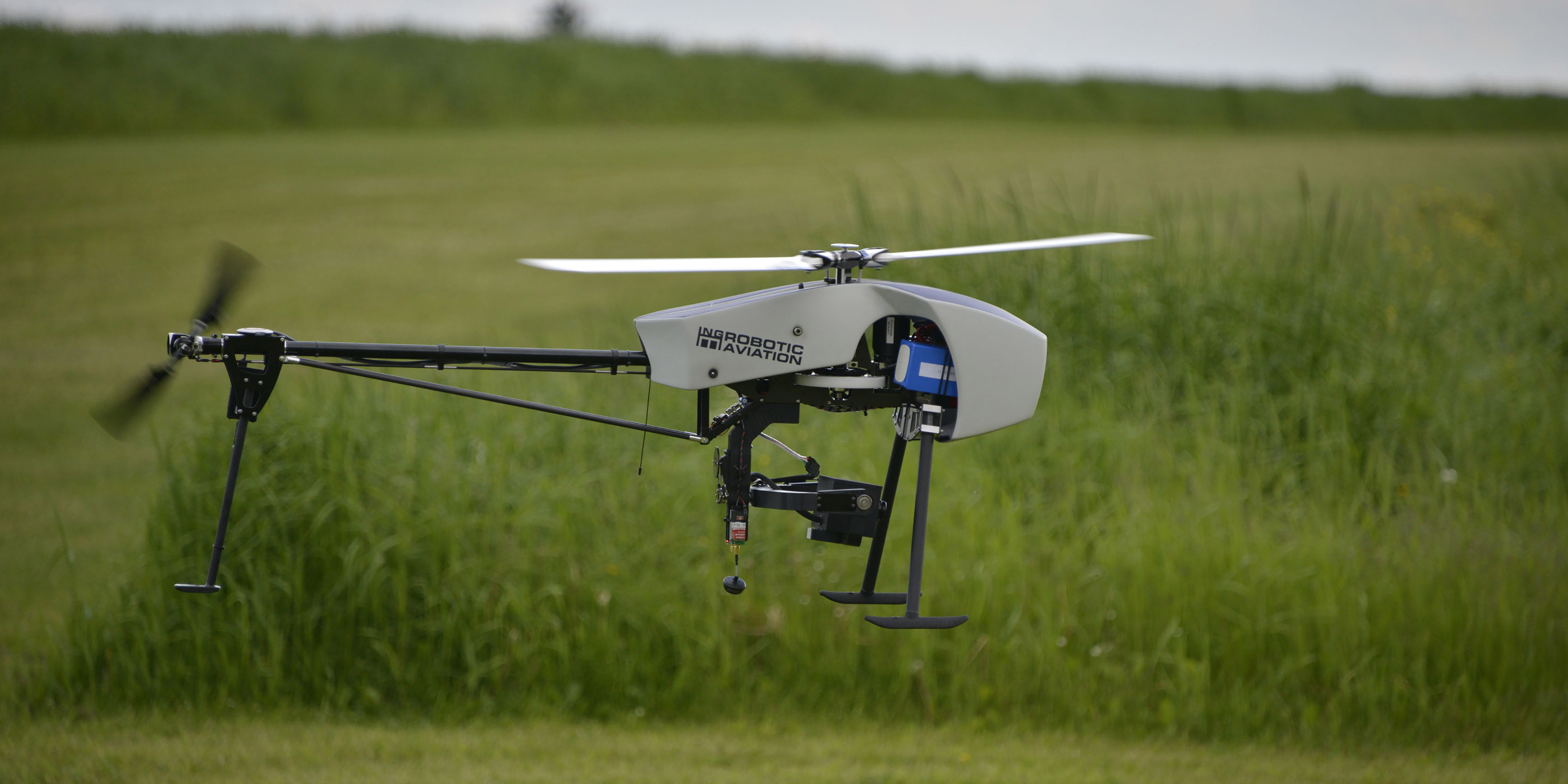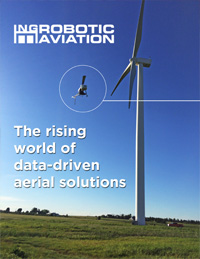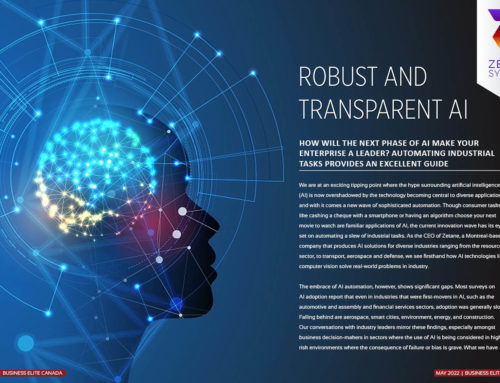The rising world of data-driven aerial solutions
Written By: Cheryl Long
Produced By: Tom Cunningham
Ian Glenn prefers to avoid using the ‘D’ word. Instead, he refers to robotic aviation as he describes how his Ottawa-based company is helping organizations worldwide use the latest in technology and innovation to advance and improve their operations.
But there’s no question that a miniature plane or helicopter swooping through the sky brings the word drone to mind. For many, there’s a negative connotation associated with the automated aircraft and that’s why acronyms like unmanned aerial vehicle (UAV) or unmanned aerial system (UAS) are often used in its place. Fortunately, as the use of drones in the commercial sector continues to increase, society is beginning to understand what a vital role the technology is playing across a range of industries.
Glenn is CEO and Chief Technology Officer for ING Robotic Aviation Inc., a company he founded in 2002. Today the company’s team of 25 employees delivers data-driven robotic aviation services in all types of conditions, providing crucial information that is both timely and valuable. Whether they’re taking images of a pipeline stretching across rough terrain, fire mapping, inspecting flare stacks or assessing crop vegetation, ING’s aircraft are venturing into areas that are often too dangerous or too costly for their human counterparts.
“Monitoring, inspection and mapping … those are the three things we do,” Glenn explained. “We can map 2,000 hectares in a single flight and create a 2D view as well as a 3D model of what we see.”
Responder can operate in harsh weather
The company has two different types of aircraft intended for different purposes. The Responder looks like a miniature helicopter and is used to gather data for wildlife counts, create a map for vegetation health assessments or provide a combination of still images and video to monitor sensitive locations, among other tasks. The sensor-carrying aircraft is robust enough to function in all weather conditions, is portable and easy to deploy, offers a 10-km radio line of sight and can take off and land vertically.
Its ability to move vertically and horizontally, and to hover for up to 30 minutes, makes it ideal in risky situations such as the inspection of a hydro tower.
“You can get up close and have a high resolution view of the things you need to inspect, and you can do it way cheaper and way safer than you ever could before,” Glenn explained. “So there’s a general theme to all of these things where we reduce the risk, the cost, the footprint in terms of people, and give much better data.”
This summer, ING’s robotic aircraft was used to capture images to assess the condition of wind turbine blades on a Nova Scotia wind facility owned by Capstone Infrastructure. It’s hard to imagine that the same job is being done by technicians who have to stop the rotating blades, climb up the tower and then rappel along the blade.
“It’s not safe, it’s not fast and it’s not cheap,” Glenn said. “We proved that we could do multiple towers in a day… three times as many towers.”
Increased safety and less loss in revenue
Not only does the Responder offer a much safer way to carry out the same job, but it also means that operators are only halting the turbines for about 90 minutes rather than up to a full day. A similar situation can occur in Western Canada where shutting down a flare stack used in gas and oil operations can lead to a substantial loss in revenue. Robotic aviation can not only take images of the stack quickly and accurately, but technology allows that data to be sent directly to the engineer assessing the stack’s condition, no matter where that person is located.
The company’s monitoring services can be used to provide extra security — businesses with valuables located in outside yards such as construction or shipping companies are obvious customers — or they can travel long distances to monitor pipelines, railroads and power lines rather than using foot patrols or all-terrain vehicles.
“We’ve got 830,000 kilometres of pipelines in Canada,” Glenn said. “We’ve got huge infrastructures in railroads and power lines. All of these things are well-suited to being monitored by drones.”
“Everything we collect is geo-referenced. We can monitor fixed areas now within the visual line of sight and we can monitor much bigger areas as beyond vision lines of sight becomes an option, which is something we’ve been working on with Transport Canada.”
Serenity can fly for eight hours
ING has also developed Serenity, a fixed wing plane that can fly for eight hours, take off using a runway or catapult and is suited to multiple environments. Known for its “continuous eyes in the sky”, the UAV boasts a 100-kilometre radio line of sight and is perfect for a variety of surveillance and monitoring applications. It’s also been used in search and rescue situations, and ice and forest fire monitoring.
Incorporating robotic aviation into many of these scenarios is becoming a viable option for more and more companies. Not only can they mitigate risk and gather more accurate data but there’s a cost savings that can reach as much as 50 percent, Glenn said. From oil and gas, mining and utilities to precision agriculture and forestry, robotic aviation is poised to change the way these and other industries keep a close eye on their operations.
In 2013, the McKinsey Global Institute identified 12 new technologies that would “drive truly massive economical transformations and disruptions” by the year 2025. ING’s work revolves around two on the impactful list: advanced robotics and autonomous and near-autonomous vehicles. The 12 technologies are suggested to have a potential economic impact worth trillions of dollars, affecting everyone from individuals to businesses to government.
Glenn’s own impact on the robotic aviation industry has been substantial. Not only has his company conducted enough flights to circle the globe 81 times, but Glenn is the founder of Unmanned Systems Canada, which provides a voice for the Canadian unmanned systems community. Established in 2002, the not-for-profit organization uses education, advocacy and the exchange of ideas and technologies to facilitate the industry’s growth. Currently, many in the industry are focused on encouraging regulation changes that would allow commercial robotic aviation to fly beyond the vision line of sight.
Plans for expansion in next 10 years
His company continues on a path of innovation, focusing on the commercial market in multiple verticals. “Existing regulations fortunately have allowed us to grow the business to where it is today and to continue to expand.” But big changes are expected in the next decade with plans to grow as a major player in the Drone-as-a-Service (DaaS) market. That means expanding their sales worldwide and extending their service offerings throughout Canada and into the United States.
“The market has changed. It’s very hot … it’s the Wild West,” Glenn said, “and if I’m successful I’ve spent 19 years getting ready for the overnight success.”
To learn more about ING Robotic Aviation, visit ingrobotic.com.







